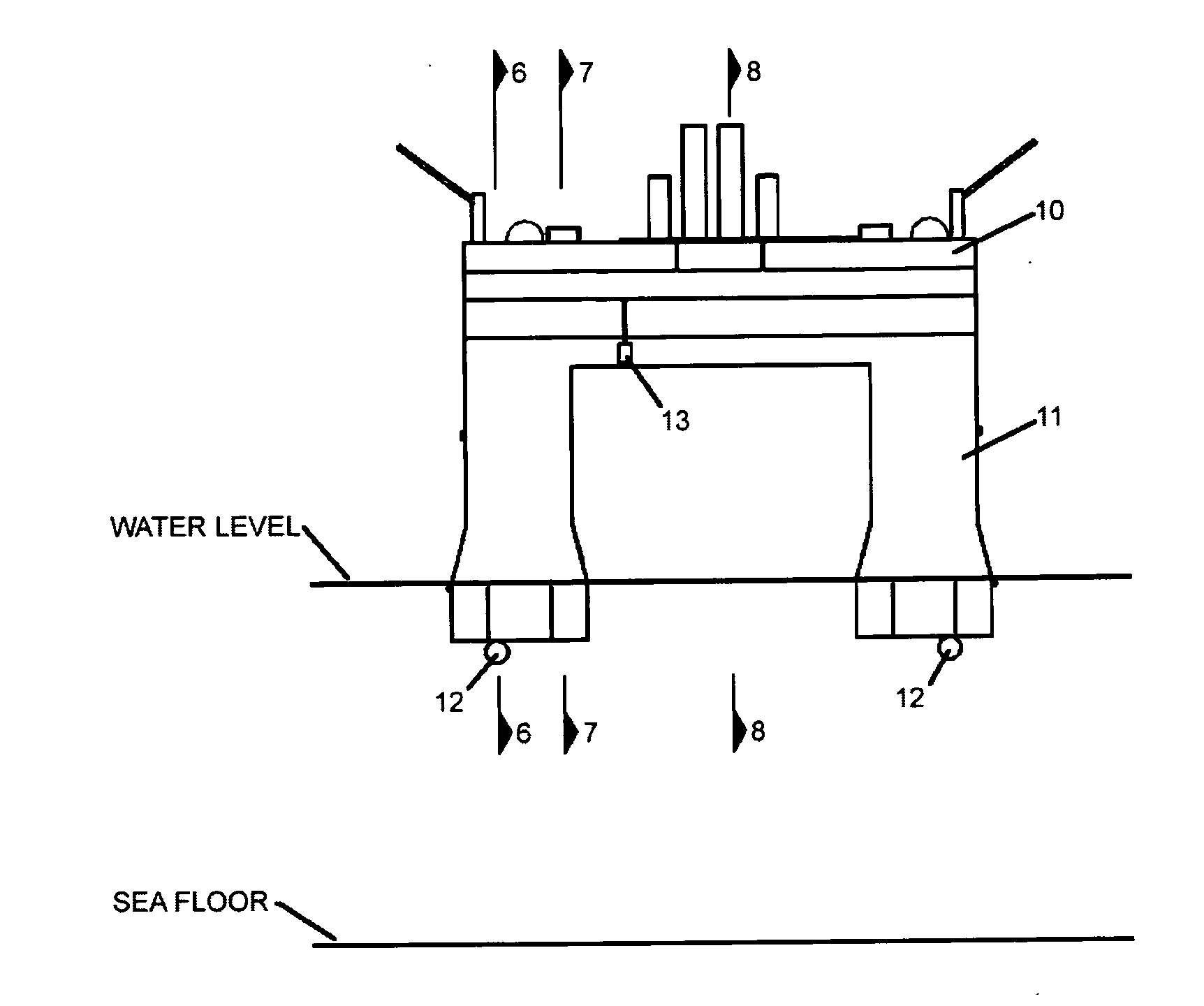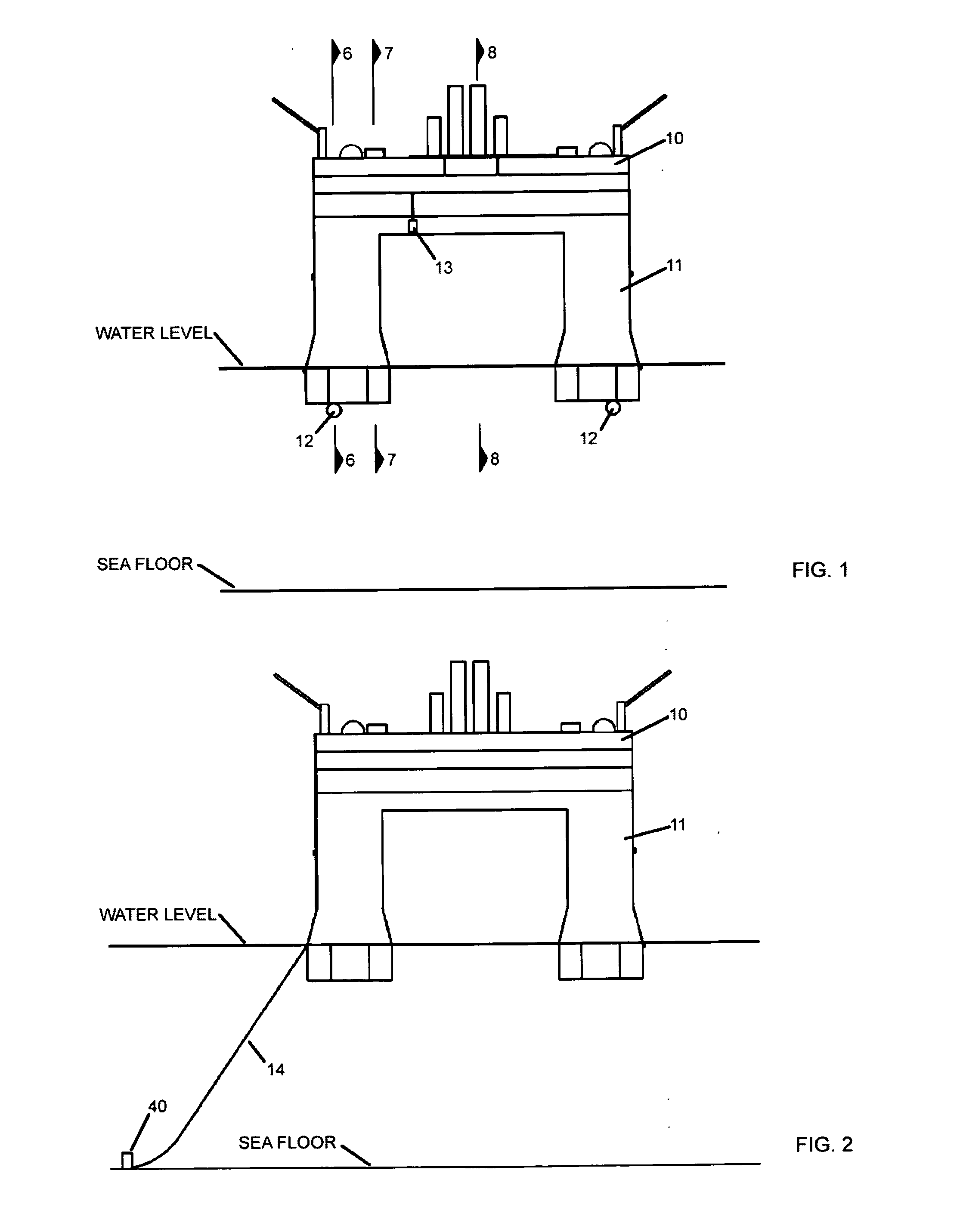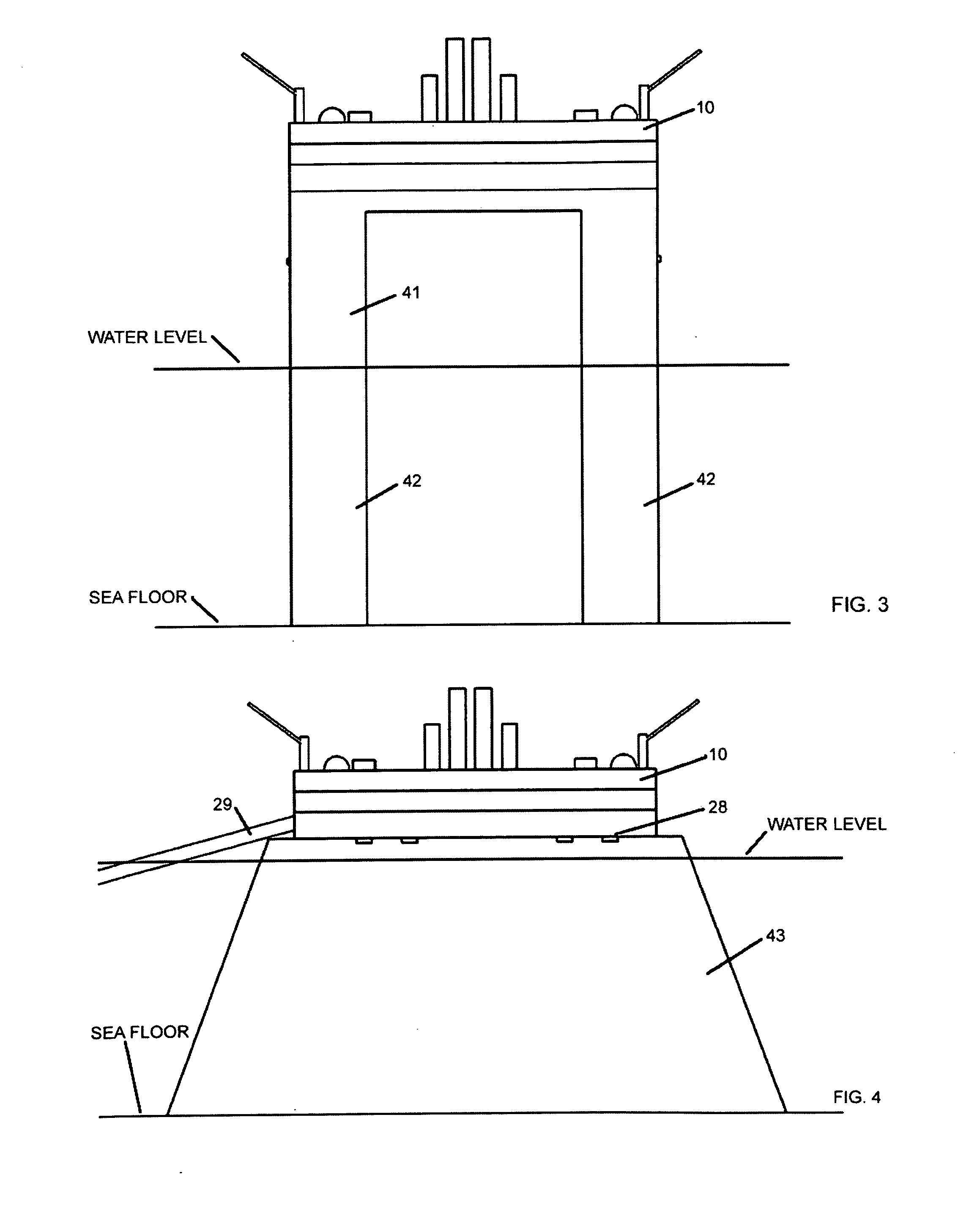Offshore energy carrier production plant
a technology of energy carrier and production plant, which is applied in the direction of special purpose vessels, vessel construction, greenhouse gas reduction, etc., can solve the problems of increasing cost and risk, increasing supply, and increasing complexity, so as to reduce the reliance on fossil fuels as an energy source, increase the use of carbon free nuclear energy, and reduce the effect of production cost and capital cos
- Summary
- Abstract
- Description
- Claims
- Application Information
AI Technical Summary
Benefits of technology
Problems solved by technology
Method used
Image
Examples
Embodiment Construction
FIG. 1 shows a three-dimensional rendering of the best mode contemplated by the inventor of an offshore mobile energy carrier production plant 10, herein referred to as the plant 10 for brevity, according to the concepts of the present invention. An example of the preferred plant 10 is carried by a semi-submersible bare-deck platform 11 also known as the MOSS CS-50 deep-sea semi-submersible platform which is available from Vyborg Shipyard JSC, 2b Primorskoe Shossee 188800 Vyborg, Russia and provides the option to be equipped with a dynamic positioning system 12 for deep water use or anchorage system 13 for water depths less than 1500 m. The semi-submersible platform 11 is selected as the best mode apparatus due to the significant stability and versatility afforded by such a design, however, other mobile nautical vessels apparatus or platforms may be able to adequately function as an offshore energy carrier production plant. An alternate offshore configuration, which could be conside...
PUM
 Login to View More
Login to View More Abstract
Description
Claims
Application Information
 Login to View More
Login to View More - R&D
- Intellectual Property
- Life Sciences
- Materials
- Tech Scout
- Unparalleled Data Quality
- Higher Quality Content
- 60% Fewer Hallucinations
Browse by: Latest US Patents, China's latest patents, Technical Efficacy Thesaurus, Application Domain, Technology Topic, Popular Technical Reports.
© 2025 PatSnap. All rights reserved.Legal|Privacy policy|Modern Slavery Act Transparency Statement|Sitemap|About US| Contact US: help@patsnap.com



